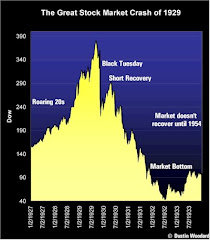An interesting article caught my attention today. TD's Don Drummond to rest his calculator end June.
The part of the article that amused me was that at age 56 and after 10 years at TD Bank, Drummond is eligible for a FULL federal government pension. He had retired 10 years earlier from the federal government but is still eligible for a full pension.
In an interview, Mr. Drummond, 56, said the plan was always to retire after 10 years at TD because he would be in a position to get his full pension from the federal government without actuarial penalties (under arrangements for people who reach the deputy minister rank).
Prior to joining TD in 2000 as chief economist, Mr. Drummond worked at the Department of Finance for 23 years, rising to the rank of associate deputy minister.Some of the comments from friends that were sent to me included:
Wow, took the pension, now he will consult and double dip...or join the Caisse. (wink, wink)
He was still making contributions to his public service pension - I just about fell over. And of course he'll be working somewhere else tomorrow and have his full pension. It never ends.
Wow, what an eye-opener.Mr Drummond is one of the better economic minds in Canada.I have admired much of the work he has done.
But this situation points out all that is wrong with our current system. A system that need reform urgently. Mr Drummond did not make the rules he only plays by them
Pension Reform
Reform is long overdue and everyone knows that it need to be done. However, it is a game of chicken. Who goes first?
The mayor of Chicago recognized several years ago the changes needed to be made and today he stated:
that the day of reckoning has arrived for a financial crisis that’s choking local taxpayers:... the crisis that won’t be pretty or politically popular.
“I hope it’s controversial. It has to be. If it’s not controversial, then it’s not worth anything,”
Same Pensions, Same Problem
Across North America public sector pensions have basically the same design. It is the design of these pensions that has to change.
The Chicago Sun-Times ran a feature last fall that highlighted the problems.
The article What they get . . . shows the design of public sector pensions. They are the same across North America for all levels of government. For example, pensions at age 50 are available in Canada to "emergency workers" and in some cases like the police department in Hamilton some employees start a couple of years before 50.
Public pensions, fat retirements
This article shows some of the jumbo pensions. They exist here in Canada too. The only problem is that we have no pension disclosure to illustrate the problem. The Sunshine List in Ontario for example, shows over 53,000 Ontario provincial employees earning over $100,000 per year. When fully qualified these pensions will pay almost twice the average Canadian's working wage.
Many are jumbo!!! Take any area from the Sunshine List and you can find some biggies. In my home town the hospitals are generous with your money. One CEO earns $613,187.21 per year. If fully qualified this income will generate a pension of around $420,000 per year. The cash or fair-value of this pension is in excess of $ 6.4 million
Double Dipping
This is frequently very popular with the pension class. As the Sun -Tines writes: Retire on Friday, start a new job on Monday -- and we pay for it al.
The pension disclosure rules were attempting to bring these types pension double-dippers abuses to light. California has one of the most popular lists. CALPERS pension list
Mr Drummond is collecting a federal government pension. In addition, probably has a juicy one from TD Bank and when he starts teaching or another government job will have several years qualification towards collecting a third pension. How is that for fun... triple dipping!
Pension Boosting or Spiking!
This is another very popular game with the pension classes. Pension boosting involves getting a pension higher than just 70% of income, the usual gold-plated pension. Pension boosting is usually done by three methods. Working overtime in the final few years before retirement helps to spike the pension dramatically. An added bonus is the overtime worked is at 1 1/2 times regular salary. The overtime goes towards pension calculations. Finally, accumulated vacation pay as well as sick time payouts. All these bonuses are not available to those outside the pension class.
The Sun-Times articles featured a similar bonus plan. A year after retiring, Jones to get 51% boost
Survivor Pensions
No one can argue with this part of the plan, a survivor pension for widows. What can be done is to prevent two pensions being paid to the same family in the pension class. A teacher widow who married a teacher would get two pensions upon the spouses death. She would get her 70% pension and 60% of her husband's pension.
On one final note about pension envy. The other day in my neighborhood, a fairly affluent one I saw a nice bright new 4X4. I thought to myself we don't see as many brand new cars around these days. Then I recognized the driver.
The driver of the car was a local civil servant who was in his early 50's, ready to retire. It occurred to me that he did not have to worry about saving anything for retirement. He would be getting 70% of his salary, indexed for the rest of his life. Of course, all guaranteed by me.
The pension classes can enjoy the good life today and rest assured that I have covered their future standard of living as well.




